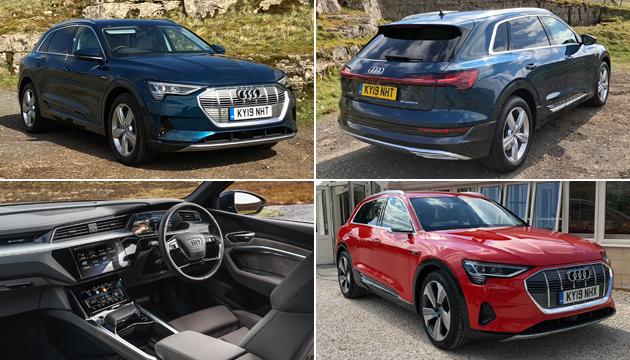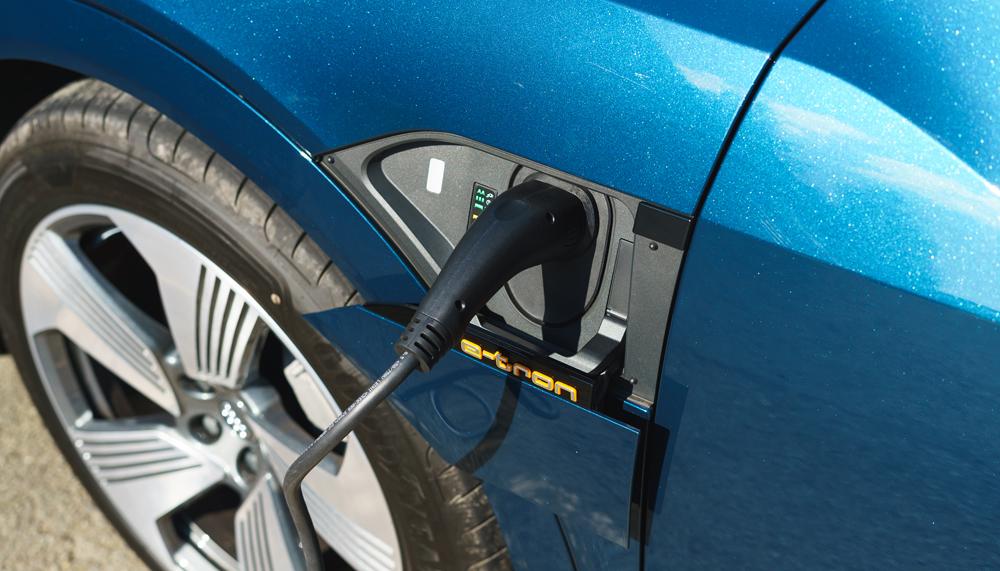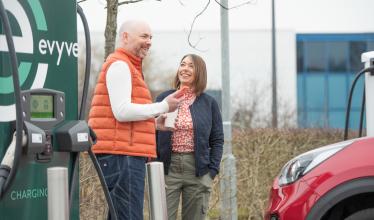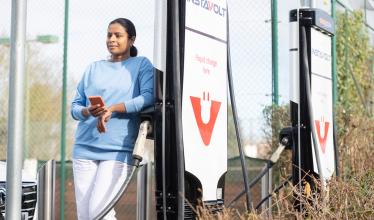Zapmap was invited up to the UK launch of the Audi e-tron in sunny Yorkshire, the first chance we’ve had to get behind the wheel of the manufacturers’ first electric car.
The pure-EV SUV is set to compete against the Jaguar I-Pace, which is similarly sized and priced to the e-tron. It will also be challenged by the Mercedes Benz EQC when that arrives later this year, and of course comparisons to Tesla’s SUV – the Model X – are natural, though the latter is larger and more expensive than the Audi.
In fact, the premium EV SUV market is hotting up, and is clearly going to be fiercely fought over by the major players, so it is worth noting that the Jaguar has a longer range and comes in at a lower price point, despite being a similar size.
Audi’s e-tron is not going to struggle to sell despite these facts I reckon, since the range is still considerable enough for most needs, it’s a spacious car, and the interior is excellent. Add in the fact that it is currently the fastest-charging car available on UK roads, and it’s clear Audi’s EV isn’t going to lag behind the competition.
It’s also a stylish machine, clearly part of Audi’s SUV family, but without many of the bold styling features that have made their way onto recent models. As such, it’s a refined and well-designed SUV, which sits between the Q5 and Q7 in the range.
The interior is both familiar to current Audi drivers, plus a move forward in many regards. The latest generation of dual-touchscreen MMI system is fitted, which includes haptic feedback to improve the accuracy of commands.
The driver gets Audi’s Virtual Cockpit digital instrument display, it’s well equipped and nicely designed, and the cabin is a pleasant place in which to sit. It’s worth remembering that the e-tron is the first car available with rear-facing cameras in place of wing mirrors – an optional extra.

So far, so good. Getting down to the driving though, the e-tron feels very . . . Audi. That is to say, composed, competent, and refined, with plenty of grip. The quattro all-wheel drive system is created by adding an electric motor on each axle, and the suspension offers a balance between comfort and dynamism.
It excels at neither, but does a good job of ironing out road imperfections. However, the Audi’s weight – almost 2.5 tonnes – is felt while cornering, and there is little feedback through the steering wheel to communicate what’s going on. It proves a little more comfortable than the Jaguar’s set-up, but I prefer the I-Pace in terms of ride and handling – it’s a close run thing though.
Performance will leave few owners wishing for more, with those previously mentioned motors producing a combined 265 kW – at least most of the time. If pushing hard, the e-tron has a boost setting, which ups the amount of power available to 300 kW for up to eight seconds. It reduces the 0-62mph time from 6.6 seconds (non-boost) to 5.7 seconds, so provides quite an improvement. It will rarely be used, but as a quick blast past slow moving traffic on country roads, it proved a valuable addition to the e-tron’s armoury.
In terms of driving range, the test route meant we couldn’t really push the e-tron to see how far you can go on a charge, which is no poor reflection on Audi’s part. Around 120 miles were covered during our time with the e-tron, and on a variety of roads, from slow-moving town traffic to motorway work.
Although not precise, the range calculated from the drive comes in at around 220 miles – from 2.3 miles per kWh averaged – with no efficient driving styles carried out on the route that looped from the A1 M, around the Yorkshire Dales, and into Harrogate.
The official WLTP range is 241 miles, and that seems easily achievable with a lighter right foot or increased town work. A typical trip with a mixture of roads and speeds should see at least 225 miles available in all but winter conditions.
Helping extend that range is a sophisticated brake energy recuperation system which can account for around 30% of the Audi’s range, and certainly worked well when I was behind the wheel. It can either be adjusted up and down in strength by using the paddles behind the wheel, or left in auto mode, where it will alter regen strength depending on requirements.

Overall, the Audi e-tron is a very good EV. In some areas it can’t compete with its main rival the I-Pace, but that isn’t going to put many buyers off. It’s a stylish, well-built, and practical EV, with a good range and plenty of performance available.
With 150 kW CCS rapid charging possible, and standard 11 kW AC – 22 kW AC will be an option later this year – it won’t take long to charge either. In fact, here is where it catches up a bit on the Jaguar’s range.
Where an I-Pace will take around 45 minutes for a 0-80% charge on a 100 kW rapid point to replenish much of its 250 mile real-world range, the e-tron will take 30 minutes for a 0-80% charge on a 150 kW rapid point to top up much of its 220 mile real-world range. The margins are tight then, and the ability to charge at up to 50 kW more than the Jaguar will swing some buyers in the Audi’s favour. There are currently no charge points available to make the most of the e-tron’s higher charging capabilities, but it won’t be long until they arrive.
For a more in-depth first drive review, head to Next Green Car, or click below to read Zapmap’s Audi e-tron Charging Guide.



